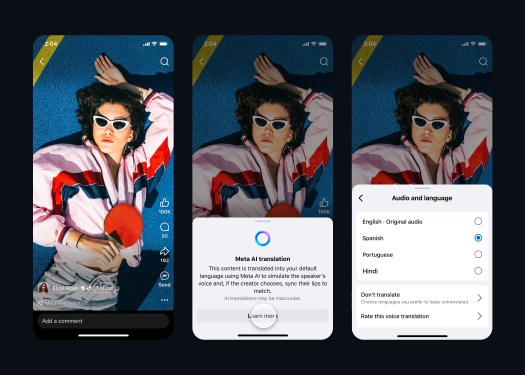Meta is placing Reels at the center of the Instagram experience on iPad and on mobile in countries like India and South Korea. Now, to help more people consume and understand Reels in different languages, the company is adding support for Hindi and Portuguese to its AI-powered translation feature across Instagram and Facebook.
This feature was first launched in August with support for English and Spanish after being previewed at the Meta Connect conference last year. By adding Hindi and Portuguese, Meta aims to connect with creators in its biggest markets, such as India and Brazil, to achieve a global reach.
Instagram head Adam Mosseri explained that the company believes there are many amazing creators with potential audiences who do not speak the same language. He stated that by helping creators reach audiences across cultural and linguistic barriers, Meta can help them grow their following and get more value from the platform.
Users can enable automatic translation in their preferred language to watch Reels originally created in another language. Creators can turn on automatic translation for their Reels by selecting the option to translate their voice with Meta AI before publishing. They can also choose which languages to translate into after reviewing the automatically dubbed and lip-synced video.
Meta is working on new features for AI-powered translation that will be released soon. Reels on Facebook already support multi-speaker AI-powered translations, and this feature will be available for Instagram creators in the near future.
In addition to voice translations, the company is developing a way to translate text or caption stickers posted with Reels in supported languages. Users will be able to select the option to translate text on Reels when the feature is rolled out. This is particularly useful for watching videos without sound.
Furthermore, Meta plans to introduce a new voice dubbing feature that will preserve the creator’s original voice and tone. The company will also offer an option for a new version of lip-syncing that better matches the movement of the creator’s mouth.
Meta’s competitor, YouTube, has been working on translation features for several years. Last month, YouTube rolled out lip-sync improvements to its auto-dubbing feature with support for 20 languages.

